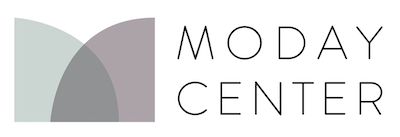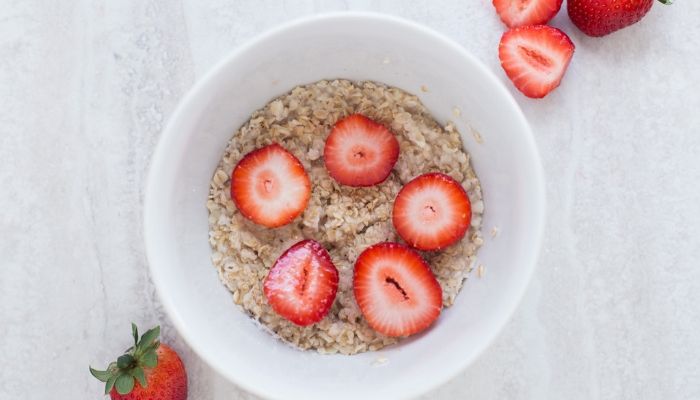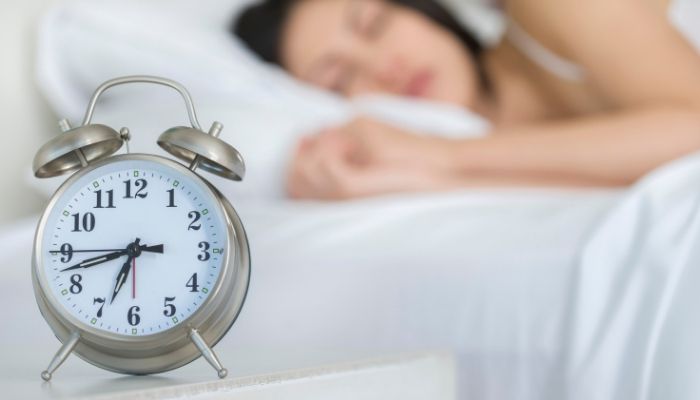Winter Blues? Fight Seasonal Affective Disorder with Light
NOVEMBER 28, 2018 by DR. HEATHER MODAY, MD
Hello Readers! I am very excited this week to have an amazing guest post from our friend and colleague Greg Yeutter. He is a specialist and entrepreneur in everything “light” related. To quote the Philly Startup Leaders website:
“Yeutter’s been working on “the blue light problem” since 2011, when he first studied and worked as a Circadian Lighting Researcher at a Drexel lab. This is where he first realized the negative impact that artificial light sources have on the human body and how important this issue really is.”
Since then Greg has gone on to develop the Bedtime Bulb which is revolutionizing healthy home lighting. Here at the Moday Center, one of our core lessons is bringing back healthy circadian rhythms to our lives because we understand how important that is to literally every aspect of our health. This all starts with light. So read on and enjoy!
Winter Blues? Fight Seasonal Affective Disorder With Light
Days are getting shorter. Leaves are falling. That can only mean one thing: winter is on the way. For many of us, along for the ride are lethargy and depression.
Tens of millions of Americans suffer from the winter blues. A more severe version of the condition, known as seasonal affective disorder (SAD) or winter depression, affects around 5% of adults [1]. Symptoms may include:
low energy
difficulty staying focused on tasks
agitation
sleep and appetite issues
feelings of hopelessness and worthlessness
In this article, I’m going to address what causes the winter blues and what you can do about it.
Light’s role in winter depression
For many, depression is seasonal, with symptoms peaking in the late fall and winter months. It’s also geographical. The farther you move from the equator, the more likely you are to be affected:
Google Trends heatmap of seasonal affective disorder searches [2]. Darker areas have a higher search volume
Why is this so? Our circadian rhythms are largely influenced by light exposure, and shorter days mean we don’t get an adequate signal that “it is daytime.” At the same time, blue and green light from electronics and artificial lighting trick our bodies into thinking it’s daytime, even when it’s actually night.
What’s the problem with blue and green light?
Think about it: our ancestors got plenty of light from the sun during the day, but there was very little light at night.
Very white daylight has a wide color spectrum that includes ample blue:
Color spectrum of urban daylight
But fire is much dimmer, and it has a lot less blue:aqq
Color spectrum of a candle. Data source: f.luxometer
Our eyes have special sensors, called intrinsically photosensitive retinal ganglion cells (ipRGCs), that detect blue and green light. When triggered, they provide an input to the circadian rhythm.
The issue is that the day is very short in the winter, so most of us don’t get enough daytime blue light. We go to work and come home in the dark. This doesn’t provide enough stimulus to synchronize the body clock.
On the other hand, the displays in our computers and phones, as well as the lighting in our homes, produce a lot of blue light. Just look at the spectrum of my smartphone:
Color spectrum of a Google Pixel 2 XL showing a mostly-white background
Lighting at home can be equally blue-rich:
A Philips Hue LED light bulb with a daylight color setting
It’s fine, and actually desirable, to get blue/green light during the day. But when we continue to use most lighting and electronics at night, it provides a signal to the circadian rhythm that “it is still daytime,” even though it’s not.
These false signals disrupt our body clock and sleep patterns, exacerbating the symptoms of SAD.
Tools and tactics to combat the winter blues
To reduce the symptoms of winter depression, you want to focus on two things:
Getting significant blue light in the morning and early afternoon
Reducing blue light exposure in the evening
Thanks to some modern tools, you can combat SAD without living like a caveman.
Get significant blue light in the morning and early afternoon
Going outside in the winter can help combat the winter blues.
Sunlight exposure
If you have access to the outdoors, try to go for a 10-20 minute walk before noon. It can be chilly in the winter, but there’s no better daytime light source than natural sunlight.
If you feel a dip in the early afternoon, you can go for another short walk outside to combat the tired sensation.
Bright white therapy lamps
When natural sunlight is not an option or it’s just too cold outside, there are bright white therapy lamps available from a number of manufacturers. Use these for 10–30 minutes in the same way you would get sunlight exposure.
It is advisable not to look directly at the light. You should turn the light off or move farther away from it if you experience eyestrain.
Reduce blue light exposure in the evening
Reducing blue light exposure at night helps combat the winter blues.
There are two sources of significant blue light that can interrupt sleep:
the screens on our phones and computers
the lighting in our environment
Computers and phones
The easiest way to reduce blue light on your devices is to dim the display. Use your intuition: adjust the brightness to a level that’s comfortable for the time of day.
In addition, there are several apps that automatically turn your display orange at night. This has the dual benefit of reducing eyestrain and cutting down on sleep-interrupting blue light.
For iPhone users, enable Night Shift. On Android, refer to this video for several options.
On Mac, enable Night Shift or install f.lux. For Windows, enable Night Light or install f.lux.
General lighting
Just as dimming your phone and laptop screen reduces blue light, so does using a light dimmer. If you have dimmers for your existing lighting, turn everything down to a comfortable level in the final hours of the day.
Unfortunately, our research found that less than 5% of households have dimmers where they spend their evenings. Worse, dimmers can be expensive and difficult to install. We were determined to come up with a solution that would work well for most people.
Bedtime Bulb is a low-blue light bulb for healthy sleep
Bedtime Bulb was designed to be the perfect evening light. It drastically reduces sleep-interrupting blue light while providing beautiful, comfortable illumination.
After measuring a number of light sources, we found Bedtime Bulb has the lowest circadian input of all (pay attention to the final column—lower is better):
You can learn more about Bedtime Bulb here and buy on Amazon. Readers of this blog are entitled to a 20% discount using the code FORMODAY at checkout (expires 6/30/19).
Winter doesn’t have to mean winter blues
In this article, you learned how light has a major influence on the winter blues. To combat seasonal affective disorder:
Increase exposure to blue-rich light in the morning and early afternoon
Minimize exposure to blue light in the evening
By implementing these tools and tactics, you may be able to create a more consistent circadian rhythm, enjoy higher quality sleep, and reduce the symptoms of SAD.
As we demonstrated, Bedtime Bulb is the perfect evening light: it’s bright enough for evening tasks, but it reduces sleep-distrubing blue light. It’s a great tool in the fight against the winter blues.
Learn more about Bedtime Bulb and buy on Amazon. Readers of this blog are entitled to a 20% discount using the code FORMODAY at checkout (expires 6/30/19).
Sweet dreams.
About the author
Greg Yeutter’s first word was “light.” For the last eight years, he’s been obsessed with light’s effects on health. Greg launched Bedtime Bulb as a simple, affordable solution to address unhealthy blue light at night.
References
[1] American Family Physician: Seasonal Affective Disorder
[2] Google Trends: seasonal affective disorder.





